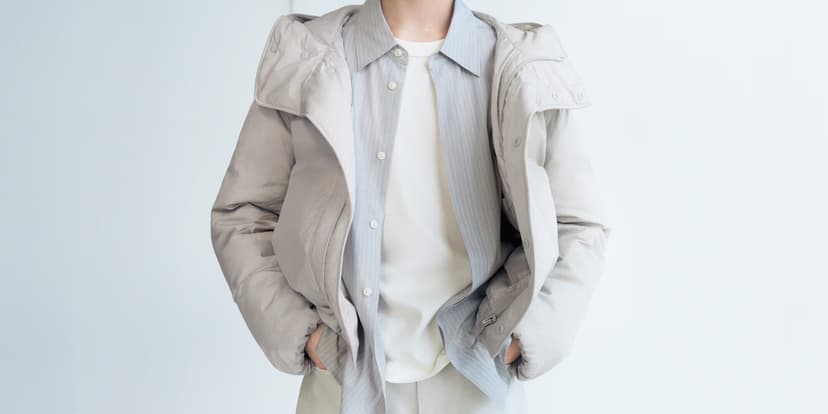UNIQLO inleder flerårigt samarbete med Musée du Louvre
Först ut är en kollektion av Peter Saville - läs en intervju med konstnären här
Den japanska klädkedjan UNIQLO kan nu avslöja ett fyraårigt samarbete med Musée du Louvre i Paris. Det franska nationalmuseet, som har en historia som kungligt palats, är det mest besökta i världen – och hem åt 35.000 konstverk som beundras jorden runt. Med inspiration från världens konsthistoria, blir den första installationen en UT-kollektion (UNIQLO t-shirt) med både en herr- och en damlinje.
Kollektionen inkluderar t-shirts och sweatshirts som pryds av historiska mästerverk. Samarbetet är perfekt för den som vill ha möjligheten att bära en kreativ tolkning av sina favoritskapelser från Louvren. Vardagskläder får nu en historisk och konstnärlig touch.
Herrkollektionen är designad av den brittiska, grafiska konstnären Peter Saville – som bland annat är känd för att ha tagit fram skivomslag till Joy Division och New Order. Han har inspirerats av temat “Konst och logik”. Saville har fokuserat på den bakomliggande logik i de konstverk som ställs ut i Musée du Louvre, som interna artikelnummer eller “golden ratio” som används i sammansättningen av flertalet konstverk – och sedan tagit upp dessa i sin design. Med en urban och grafisk stil ser vi honom tolka konstverk som Mona Lisa, Nike från Samothrake och Venus de Milo.
För damkollektionen Musée du Louvre: Blossom of Diversity, ligger fokus på konstverk med kvinnliga motiv. Linjen är designad av UNIQLO själva, och vi ser tolkningar av skapelser som Mona Lisa, La belle jardiniére och Grande Odalisque. Plaggen har en lekfull och livlig design där figurerna framställs i kombination med blomstrande motiv. Även kollektionens sweatshirts har ett kvinnligt tema som presenteras genom linjär konst.
Peter Saville berättar om kollektionen
I en intervju berättar konstnären Peter Saville om temat “Konst och logik” samt den urbana och grafisk stil som används för att tolka konstverk som Mona Lisa, Nike från Samothrake och Venus de Milo. Läs den intervju som UNIQLO med Peter Saville nedan:
What was the inspiration for this collection?
UNIQLO’s invitation to work with the Louvre and the pieces from their collection was irresistible…and I love that the Louvre has a system for numbering every work – as we did at Factory Records!
What was the logic behind The Factory Records’ numbering system?
It was the philosophy of culture in mass production. Therefore, the numbering system seemed appropriate to a project named Factory. After all, factories produce products and those products are numbered. The Factory inventory reached 500 and I think at the Louvre’s is over 300,000, so not exactly comparable!
Possibly the most well-known painting in western society – I’d been told it was internally known or sometimes referred to at the museum by its inventory number, Painting No.779. This stuck with me – as there is a frisson of exquisite irony in the context of a painting being catalogued with a number then within the culture of the museum becoming known by the number. My pieces are not the art, but there is something of the experience of visiting the art. If this collection of T-shirts does anything, it kind of captures the experience of visiting an art museum and seeing this kaleidoscope of imagery.
How did you choose the works of art to feature in your designs?
Alongside technical considerations such as how well some images may reproduce and with respect to diversity across social cultures globally, works were chosen from each of the Louvre departments to demonstrate the breadth of what the museum houses. The collection is divided among eight curatorial departments: Egyptian Antiquities; Near Eastern Antiquities; Greek, Etruscan and Roman Antiquities; Islamic Art; Sculptures; Decorative Arts; Paintings; Prints and Drawings.
And it was almost impossible to choose what to work with, but there were certain pieces I couldn’t leave out. It must have been sometime in the early 1980s when I first visited the Louvre and a work I always go to is The Winged Victory of Samothrace. I love its energy and it has a precise geometry, as do all of the classical works.
We drew some spirals around the Winged Victory, to see it compositionally rather than figuratively. It’s interesting to look at them as shapes, and it’s easier to do that if you reduce them down to essential form. The Winged Victory is very triangular… You approach it like the apex of the triangle and that seems to be part of this contained and controlled energy within the piece. It’s quite immortal, that work.
What is the significance of art or the importance of museums to you?
So much of my own experience with art has been through books and magazines…but there is really nothing more important and valuable than actually seeing the work itself. It is a very powerful experience to see the works themselves. When I get to see art and actually the older I get, the more I appreciate it, I am kind of overwhelmed. I am more appreciative, tolerant and curious now.
There’s always more to learn, more to realize and more to take away. Whether it’s emotional or political in attitude, or even just color— extraordinary palettes and interactions of color – it’s great to be reminded of what’s possible. You can come away feeling inspired.
I’ve always been attracted to the sense of a continuum. I recognize the purity of a particular moment, but life is not one moment, it is made up of a series of moments. Earlier in my life I realized I was impressed by situations that showed a recognition of the continuum – an awareness of culture as a spectrum. In my own work I have proposed juxtapositions between the now and the then. To see the historic in a new context, for example the Fantin-Latour painting that I chose for Power, Corruption and Lies 35 years ago.
This collaboration is introducing the masterpieces in a new way to a new audience —and perhaps with the inventory numbers they kind of provide a different way of looking at something. What is exciting about bringing a fresh take to a classic work of art?
I mean the one…undeniably or unarguably one of the consequences of doing these T-shirts will be that somebody, somewhere in the world who was not formerly aware of even the Louvre, or the Mona Lisa, or the Winged Victory, or the Cupid and Psyche, is introduced to something. Through my record covers, I introduced cultural insights to people who had not yet had the benefit or privilege of that information. They did not think they were interested in 19th century romanticism but they did like New Order. They were not interested in astronomy, but they did like Joy Division. Or they were curious. So, you can, through some populist channels, introduce and engage people with content.
Well it’s really about curation, right? We are placing importance on these works of art. Whoever created Winged Victory, would they ever think that it would end up on a T-shirt?
Well, da Vinci would ask, what is a T-shirt? I mean it is impossible to contemplate what the creators of these works would think. I mean in some ways they might quite like it, because it is only the same as a postcard being made of something you did, and nobody minds a postcard being made—it’s a marker, it’s a recognition, it’s a celebration.
What is the power of the graphic T-shirt, in contemporary and historical culture? And maybe this idea of wearing a T-shirt is like bringing the Louvre out onto the streets all over the world?
These T-shirts have the power to take the Louvre to every place in the world. A T-shirt has the power to take an idea to the world. The t-shirt can be a way of saying something about yourself and about what matters to you. And very often, we encounter new ideas and new things through someone else’s t-shirt. The t-shirt can be a statement of self, and what we’re interested in and what we care about. The t-shirt is a combination of you and an idea. Or you and a statement. You and how you want things to be. You and what you want others to know. A T-shirt is about you and what matters to you.
One last question on that, does it democratize the work, making this art accessible for everyone? Out on the street on the subway you get to see the Mona Lisa? Winged Victory?
Arguably it democratizes, it certainly familiarizes. And I think that’s actually very interesting. Because it reduces this gap between the everyday and the cultural hierarchy. Culture should be for all. The t-shirt is a way by which a singular thing can be shared by many, a great way of sharing an idea with the world.
Den första kollektionen från samarbetet släpps den 5 februari via UNIQLO’s hemsida samt i butikerna i Kungsträdgården samt Westfield Mall of Scandinavia.



